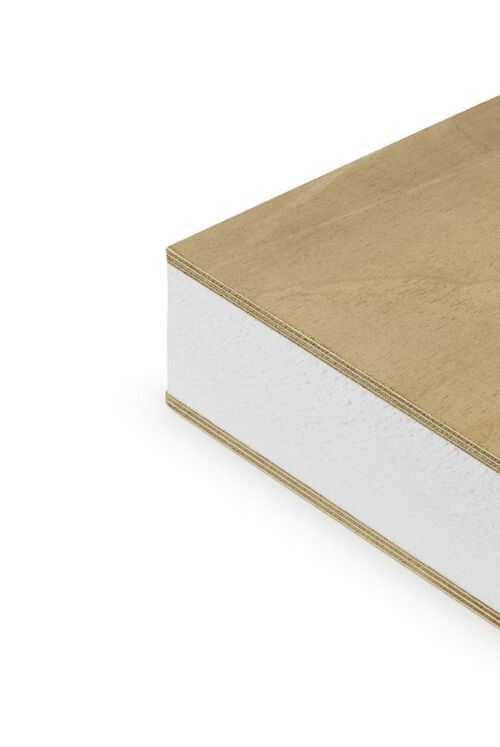Bardenas Reales Visitor and Information Centre - an example of quick and easy construction using sandwich panels
Read the featured articleThe Bardenas Reales Visitor and Information Centre is a unique building designed for use by visitors to this Natural Park and Biosphere Reserve. The old building has been renovated by architect firm Capilla Vallejo, to a large extent using Garnica ultralight insulating sandwich panels.
Conrado Capilla and José V. Vallejo are the authors of this project, the focus of which has been the renovation of the pre-existing building on the site. As far as possible, the architectural approach sought to retain the appearance of the original building, to create a contrast with the new construction. In addition, the works had to be undertaken whilst the centre was in use and for this reason dry construction systems were used, which allowed the construction time to be reduced thanks to the use of prefabricated elements. The project was completed in just six months, and the centre remained open to visitors throughout this period.
The new building has a cutting-edge design, with an interesting blend of interior and exterior areas and an excellent use of space. It also stands out for its energy efficiency owing to the use of thermal and acoustic insulation materials, including Garnica’s sandwich panels.
Garnica G-Brick DECO structural insulation panels were chosen as the base material for the interior partitions and raised floors. This product is a structural-grade sandwich panel, made from two durable poplar plywood panels (offering exceptional external resistance to fungi and insects) and an XPS extruded polystyrene core providing thermal and acoustic insulation.
Garnica Ultralight panels were used for the walls and ceilings. These are particularly suitable for this type of project since they are extremely lightweight (density of 250 kg/m3 for a thickness of 18 mm) and have exceptional thermal and acoustic insulation properties.
The Ultralight panels have an XPS core, plywood panels made from sustainable European poplar and are supplied in an extensive range of finishes. The combination of the excellent mechanical properties of Garnica plywood – lightness, stability and easily machinable – and an insulating, ultralight material such as extruded polystyrene – produces a panel with improved performance.
Ultralight Poplar, with a black and white HPL finish, was the product chosen for the panelling and also for the doors and furniture owing to its attractive appearance and exceptional resistance to impact and scratching.
The building’s interior houses the biologist’s offices and the classrooms and is soundproofed thanks to the properties of these panels and the thermal and acoustic insulation they provide.
The building envelope and the exterior courtyard blend with the exhibition gallery through the use of a clever combination of materials: glass, aluminium and steel. The gallery exhibits a model of the Bardenas Reales Natural Park to help visitors plan their route.
The building is also an environmental education centre for groups of young people and students with the aim of teaching them about the features of this semi-desert reserve, the only steppe of its kind in Europe.
The Bardenas Reales Natural Park covers an area of 42,000 hectares. Its soils are made up of clay, chalk and sandstone that have been eroded by wind and water to create canyons, plateaus and hills with surprising shapes. The Park’s most famous and striking feature is the Castil de Tierra, or Fairy Chimney, a small hill in the shape of a chimney similar to those seen in Cappadocia (Turkey).


